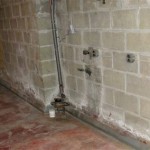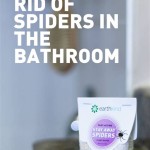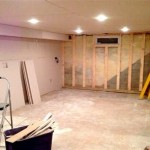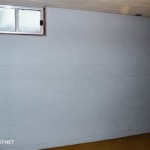How To Save Carpet After Basement Floods
Basement flooding poses a significant threat to property, and carpets are particularly vulnerable. Water damage can lead to mold growth, unpleasant odors, and structural degradation of the carpet fibers and underlay. However, prompt and effective action can often salvage carpets after a basement flood, mitigating long-term damage and potential health hazards. This article outlines a comprehensive guide on how to save carpet after a basement flood, emphasizing crucial steps for assessment, water removal, cleaning, and restoration.
The success of carpet salvage depends largely on the type of water involved in the flood. There are three categories of water damage:
- Clean Water: This water source is considered sanitary and poses minimal health risks. Sources include rainwater, broken water supply lines, or overflowing sinks.
- Gray Water: This water source is contaminated and may cause illness. Sources include dishwasher or washing machine discharge, or toilet overflows containing urine.
- Black Water: This water source is heavily contaminated and contains pathogens that can cause serious illness or death. Sources include sewage backups, floodwater containing bacteria, or stagnant water.
Carpets exposed to gray or black water usually require professional cleaning and disinfection or, in severe cases, replacement. This article primarily focuses on saving carpets exposed to clean water, although the initial steps of water removal and drying are universally applicable regardless of the water category. If the water is suspected to be gray or black water, it is crucial to contact a professional remediation company immediately.
Immediate Action: Prioritizing Safety and Assessment
The first priority after a basement flood is ensuring personal safety. Before entering the flooded area, it is essential to turn off the electricity to prevent electrocution. Water conducts electricity, and even a small amount of water can create a dangerous environment. Wear protective gear, including rubber boots, gloves, and a mask, to minimize exposure to potential contaminants.
Once the area is deemed safe, assess the extent of the water damage. Determine the source of the flooding, the type of water involved, and the level of saturation in the carpet. This assessment will inform the subsequent steps in the restoration process. Document the damage with photographs and videos for insurance purposes. Contacting the insurance company promptly is also essential to initiate the claims process and understand the policy coverage for water damage restoration.
Remove furniture and other items from the flooded area to prevent further water damage and facilitate the drying process. If furniture is waterlogged, elevate it on blocks or furniture risers to allow air to circulate underneath. Move items to a dry, well-ventilated area. For valuable or sentimental items, consider consulting a professional restoration service.
Water Removal: Extracting Excess Moisture
Efficient water removal is critical to prevent mold growth and minimize long-term damage to the carpet. The longer the carpet remains wet, the greater the risk of microbial contamination and structural degradation. Several methods can be employed to extract excess moisture, depending on the severity of the flooding.
For minor flooding, a wet/dry vacuum cleaner can effectively remove standing water. Use a vacuum with a hose attachment to reach all areas of the affected carpet. Overlap each pass to ensure thorough water extraction. Empty the vacuum cleaner frequently and disinfect the tank after each use to prevent the spread of bacteria.
For more extensive flooding, a submersible pump or a carpet extractor may be necessary. A submersible pump can quickly remove large volumes of standing water. A carpet extractor, also known as a water claw, is a specialized device designed to extract water from carpets and upholstery. These machines typically have a powerful suction mechanism that pulls water up from the carpet fibers and into a holding tank. Renting a carpet extractor from a local hardware store is a cost-effective option for addressing moderate to severe flooding.
After removing the standing water, consider removing the carpet from the tack strips. This allows for better airflow and facilitates thorough drying of both the carpet and the subfloor. Use pliers or a flathead screwdriver to carefully detach the carpet from the tack strips around the perimeter of the room. If the carpet is glued down, this step may not be feasible, and alternative drying methods may be required.
The carpet padding, or underlay, is highly absorbent and often retains significant moisture after a flood. In most cases, the padding should be removed and discarded, as it is difficult to thoroughly dry and disinfect. Replacing the padding is generally more cost-effective and hygienic than attempting to salvage it. However, if the padding is relatively new and the flooding was minimal, it may be possible to dry and disinfect it properly. Consult with a professional water damage restoration company to assess the feasibility of salvaging the carpet padding.
Cleaning and Disinfection: Preventing Mold Growth and Odors
Once the excess water has been removed, the carpet must be thoroughly cleaned and disinfected to prevent mold growth and eliminate unpleasant odors. Mold can begin to grow within 24 to 48 hours of water exposure, so prompt action is essential. The cleaning and disinfection process should address both the carpet fibers and the subfloor.
Begin by rinsing the carpet with clean water to remove any remaining dirt and debris. A garden hose with a spray nozzle can be used for this purpose. Ensure that the water pressure is not too high, as excessive force can damage the carpet fibers. After rinsing, apply a carpet cleaner specifically designed for flood damage restoration. Follow the manufacturer's instructions carefully, and ensure that the cleaner is compatible with the carpet fiber type.
Consider using a disinfectant to kill any remaining bacteria or mold spores. A diluted bleach solution (1 part bleach to 10 parts water) can be effective for disinfecting carpets, but it should be used with caution, as it can discolor or damage certain types of carpet fibers. Always test the solution in an inconspicuous area first to ensure colorfastness. Alternatively, a commercially available antimicrobial spray can be used. Apply the disinfectant evenly over the affected area and allow it to dwell for the recommended time before rinsing.
The subfloor beneath the carpet should also be cleaned and disinfected. Remove any remaining debris and scrub the subfloor with a solution of water and detergent. Rinse thoroughly and apply a disinfectant to kill any mold spores or bacteria. Allow the subfloor to dry completely before reinstalling the carpet.
Proper ventilation is crucial during the cleaning and disinfection process. Open windows and doors to allow fresh air to circulate. Use fans to increase airflow and speed up the drying process. Dehumidifiers can also be used to remove excess moisture from the air. Run the dehumidifiers continuously until the carpet and subfloor are completely dry.
If odors persist after cleaning and disinfection, consider using an odor neutralizer. These products are designed to eliminate unpleasant smells rather than simply masking them. Choose an odor neutralizer specifically formulated for carpets and follow the manufacturer's instructions carefully. Some odor neutralizers can be sprayed directly onto the carpet, while others are designed to be used in conjunction with a carpet cleaning machine.
Drying and Restoration: Preventing Future Problems
Thorough drying is essential to prevent mold growth and ensure the longevity of the carpet. Even after cleaning and disinfection, residual moisture can create a favorable environment for fungal growth. Several methods can be used to dry the carpet effectively, depending on the available resources and the severity of the flooding.
Proper ventilation is paramount during the drying process. Open windows and doors to allow fresh air to circulate. Position fans strategically throughout the room to maximize airflow. Direct the fans towards the carpet to promote evaporation. If possible, elevate the carpet on blocks or furniture risers to allow air to circulate underneath.
Dehumidifiers are highly effective at removing excess moisture from the air. Run the dehumidifiers continuously until the carpet and subfloor are completely dry. Empty the dehumidifier tanks regularly to prevent overflow. Monitor the humidity levels in the room to ensure that they are within an acceptable range (typically below 50%).
Professional drying equipment, such as air movers and desiccant dehumidifiers, can significantly accelerate the drying process. These devices are designed to deliver high volumes of dry air to the affected area, effectively removing moisture from the carpet and subfloor. Consider renting professional drying equipment from a local rental company if the flooding was extensive or if time is a critical factor.
Once the carpet and subfloor are completely dry, inspect the tack strips for damage. Replace any damaged or corroded tack strips to ensure a secure and long-lasting installation. Reinstall the carpet, carefully aligning it with the tack strips around the perimeter of the room. Use a carpet stretcher to ensure a tight and even fit.
Finally, clean the carpet thoroughly using a carpet cleaning machine. This will remove any remaining dirt or debris and restore the carpet to its original appearance. Consider applying a carpet protector to help prevent future stains and water damage. Regular maintenance, including vacuuming and professional cleaning, will help to prolong the life of the carpet and prevent future problems.

Can You Save Carpet After A Flood Constructeam

Can You Save Carpet After A Flood Constructeam

Here S What To Do With Your Carpets After A Flood

How To Dry Out Basement Carpeting Diy Family Handyman

Dealing With Basement Water Damage After Flooding To Avoid Mold Mildew Just Plain Cooking

How To Remove Water From Wet Carpet Pad Basement Flood Damage Cleanup Youtube

7 Tips For Drying Wet Carpet Preventing Mold Growth Astrobrite Local Family Run

Water Removal Flooded Carpet Pad Damage Youtube

How To Dry Carpet After Flooding

How To Dry A Wet Fitted Basement Carpet With Little Effort Youtube
Related Posts







